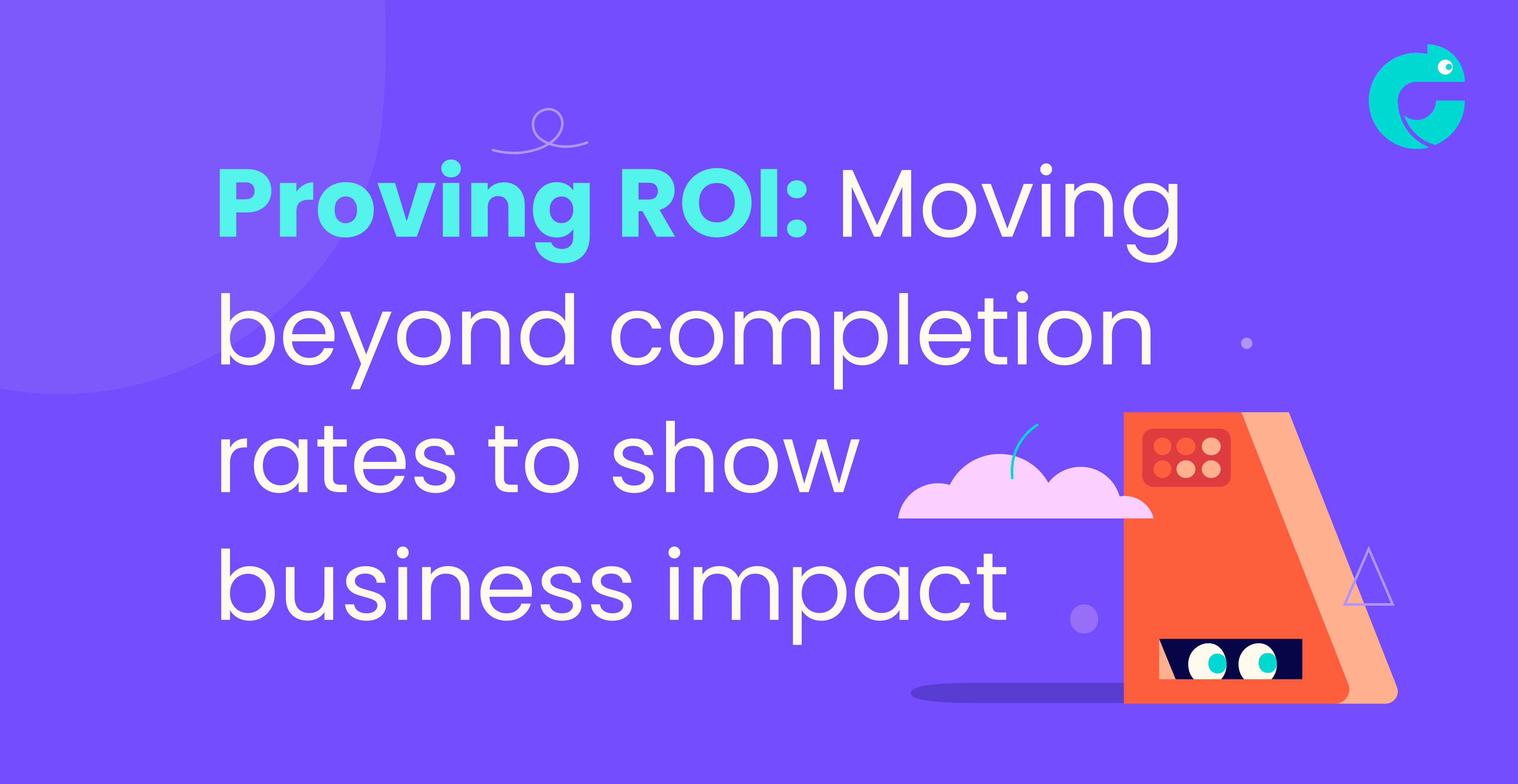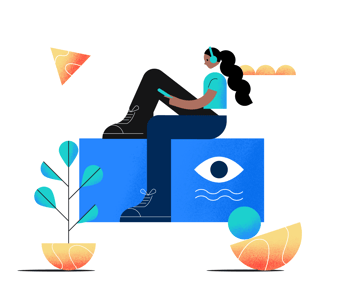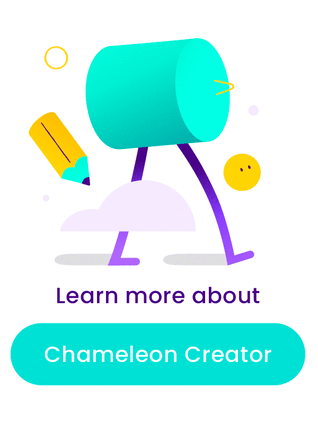Storytelling in Learning Design
Why storytelling in learning design makes content hit harder, go deeper, and stick longer
Mr. Clark wasn’t tall. He was slight and wiry, but he had an aura that gave him as much presence as a man twice his size. He was my English teacher, and the best teacher I ever had.
Mr. Clark knew the power of storytelling because stories saved his life as a prisoner of war.
He told us how, in his cell, hungry, afraid and bored, he’d recite to himself all the stories he knew. It got him through. He made it home. And that's why Mr. Clark didn’t want us to ever be alone without stories.
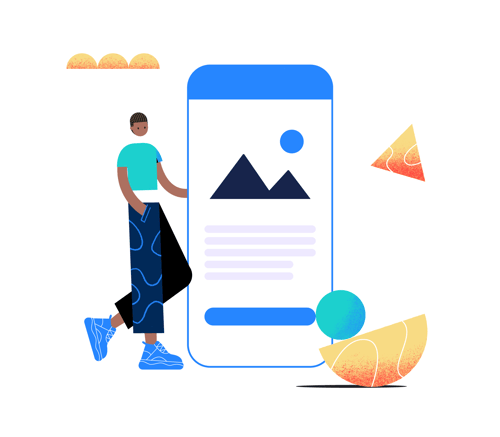 Humans are hardwired for narrative
Humans are hardwired for narrative
We’re programmed to respond intensely to stories because stories used to keep us safe.
Through stories, we learned that there were wolves in the hills and good hunting to the west. We were able to learn from the adventures and experiences of others, without putting ourselves at risk.
And because stories = survival, our brains reward us for listening to them.
Brain scans of people listening to stories show areas of our brain respond to descriptions of movements, textures and smells as if we were experiencing those sensations for ourselves. Stories also make our brains release a powerful hormone called oxytocin. Sometimes called the 'love hormone', oxytocin enhances our capacity for empathy.
Not only do we respond to stories that stimulate our senses, but we also react to characters in stories much as we would to people in real life. We believe in them.
Four benefits of baking stories into learning 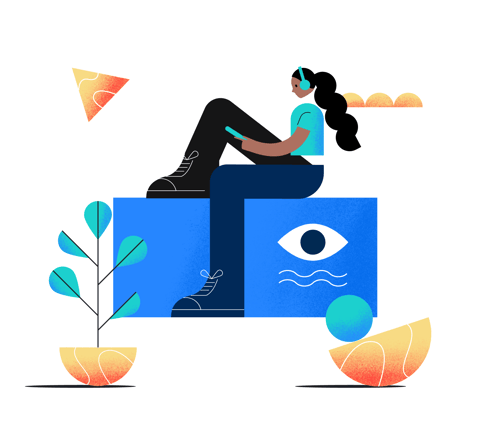
So, we know stories tickle our brains deliciously. But what other benefits does storytelling have for learning and development?
1. Stories simplify the complex
Complex things are hard to grasp. Our brain is lazy, and it shies away from working too hard. But our brain also loves a story, so we can trick it into assimilating complex information by disguising it as a rollicking good yarn.
You can use a story to simplify complex topics by giving real-life examples that illustrate the point you’re making. Scenarios and customer stories are perfect examples of this in action.
You can also use a story to make dry topics more engaging and relatable. If we’re struggling to relate to a situation, a story can create a personal connection. Suddenly we can see how something applies to our lives.
Imagine you’re creating an online module showing a bank’s customer service team how 2-step verification is an important part of setting up a new bank account. You could simply outline the process step by step, and hope people remember it, or you could tell a story.
Which feels more engaging and memorable to you?
|
For a customer to apply for a new bank account, they must follow a To verify the customer's identity, they must bring their identification and a recent statement into a branch. The teller in the branch will then verify their identity and begin the application process. If the customer calls the contact centre, they must answer a series of security questions to verify their identity.
|
Meet Alex. Alex has just moved home to New Zealand and landed her dream job! But she's realised she doesn't have a local bank account anymore, and needs one set up ASAP. On the hunt for some sushi, Alex gives the bank contact centre a quick call. After answering a few simple security questions, all she needs to do is bring her ID and a recent bank statement to her local branch where the teller will take care of everything.
|
2. Stories take us out of our own heads
Sometimes learning challenges us by questioning our fixed assumptions or pushing our boundaries.
If you introduce uncomfortable new ideas by using stories to establish common ground and connect people emotionally to your content, you can gently make people aware of tricky issues, and coax them into changing their attitudes.
Storytelling also sparks connection and empathy. Neuroscientist Uri Hasson researched the impact of storytelling. He found that as we listen to a story our brainwaves synchronise with the other people listening and with the storyteller. When we listen to stories, we become closer to each other.
3. Stories stick with us for longer
Stanford professors Gordon Bower and Michal Clark assessed how memorable words were embedded in stories compared to a random list. Students were asked to memorise sets of unrelated words. One group could remember the words any way they chose. The second group were told to write a story that contained all the words in a set. When asked to recall the words the story group were able to remember six to seven times as many words. This episode of Explained on Netflix spectacularly shows how this works.
We want people to recall learning and put it into action. Our brain stores memories far more effectively when they are associated with emotions. This is called neural coupling. A great story makes us feel and makes it easier for our brains to store and retrieve memories. The more emotive a story is, the more oxytocin we produce, the longer we remember it.
4. Stories change our behaviour
Learning and development teams exist to change the way people think, feel and behave.
Connecting HOW to WHY is one of the most powerful things you can do in learning. No one will change the way they act unless they buy into the reasons for change.
Stories also inspire action by:
- Teaching us what to do in certain situations.
- Encouraging us to explore the effect our actions have on others.
- Making abstract ideas feel real and relatable.
- Engaging our emotions and making us feel like we want to do this new thing.
Five ways to use storytelling in your learning resources 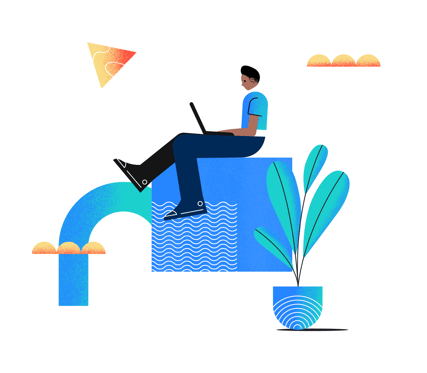
Storytelling can make learning hit harder, go deeper and stick longer, so let's look at some of the most obvious areas it can be used across your organisation.
1. Onboarding new talent
When you bring new people onboard you want to nail two things.
First, you want folks to feel like they’re part of the team, so they know what you do, why, and how you do it. This helps capture their hearts and minds and reinforces they’ve made a great choice joining your organisation.
Second, you want to equip them with the skills and knowledge they need to get their job done.
Stories help. You can use them to intro new hires to your organisation’s history, mission, vision, and values. They’re a handy way to get new folks familiar with your products, services, and customers. And they help make policies and procedures meaningful and memorable.
2. Sales training
Sales training allows you to double dip on storytelling fun times.
Not only are stories a great way to train your sales team on your products or services, but they can help your sales folks better understand your customers and their challenges, and convey how your products or services can help them.
They’re also a powerful way of influencing others, which makes storytelling a crucial skill in sales.
3. Learning new systems and software 
“Oh yay! CRM training,” said no one, ever.
Learning to use a new system can be a pretty unappealing activity because systems training has such a dry, boring rep. But systems training doesn’t have to suck. With storytelling, you can spice things up by using real-life scenarios your learners are likely to encounter and give them real challenges to solve.
A few years ago, a big construction company I worked with implemented a new resource planning system to handle procurement and accounting. But key people at the top of the value chain weren’t using it properly. The wrong supplies were delivered to sites, which caused no end of problems for site managers. Not only that, but payments to suppliers were also incorrect, and the poor Finance team were spending hours playing detective to fix the mistakes, on what was supposed to be an automated system.
The company realised that before they could teach people how to use the new system, they had to show them why using it right was so important. They told stories that showed how one error cascaded down the organisation creating problems for everyone. Sure enough, once people understood the distress carelessness was causing, they started using the system right.
A central principle of learning and development is that unless you give people a reason to care, you won’t see the behaviour changes you’d like.
4. Compliance 
Yes, you need your teams to comply with rules and regulations. But L&D doesn’t exist to tick compliance boxes, we strive to achieve far more than keeping the auditors happy. Effective compliance is about changing behaviours and helping your people make good choices. Whether it’s data protection or health and safety, storytelling can make compliance learning sticky and relatable.
- Scenarios place learners in a tricky situation, simulate real choices they may encounter, and allow them to explore their options without risk.
- News stories give real-life examples of compliance breaches and opportunities to role play better solutions.
- Back stories give important context to policies and regulations and help people see the real-life value of the training.
5. Leadership
Skills like conflict resolution, communication and coaching are all key leadership traits, but they don’t come naturally to everyone. Learning to tell stories helps leaders do these things more naturally, and using real-life scenarios creates crucial context.
Leadership is also about having quality conversations that influence people to act. Teaching leaders to tell better stories helps them become more motivating, inspiring leaders.
Storytelling principles for effective learning 
If you’re sold on storytelling as a learning approach, here are six tips to help you integrate storytelling into your learning.
1. Make stories relevant to your learners.
Ok, this one's pretty obvious, but people tend to resist learning because it’s hard work or they don't see a reason to change unless they can see how it benefits them. Use stories to create a realistic context, relatable characters and scenarios your learners are likely to encounter.
2. Evoke emotion.
The best and most effective stories make an emotional connection, whether it’s desire, fear, courage or empathy; make your people feel something.
3. Stimulate the senses.
Imagine a big, bright, perfectly ripe, red strawberry. Imagine the way it smells. Imagine the sweet, juicy flavour as you bite into it.
Remember how we talked about how the brain responds to descriptions of movements, textures, and smells, as if they were real? Really evoke those senses in your learning scenarios with rich description, and your learners will picture themselves there.
4. Provoke curiosity, use suspense and chuck in a twist.
If you tease with a juicy nugget of information at the beginning of your story you can make your learners curious. If you hold off on delivering the gold till the end you create suspense and keep people engaged. And a surprising plot twist always makes things 'sticky'.
5. Keep it real.
Stories about failures are even more valuable than stories about success. Not only are they packed with learning, but they also show humanity and vulnerability. People have an emotional response to failure that makes it memorable, and humans have always learned more from failure than success.
6. Make it visual.
Sure, you’re painting a picture using words, but you know what paints a picture better than words? Pictures!
Imagery helps bring stories to life. For most people, vision is our primary sense. It’s how we make sense of the world around us. Using high-quality, relevant imagery helps create additional context for your learners to connect the dots. Check out our favourite resources for making your learning more visual.
Storytelling in learning design 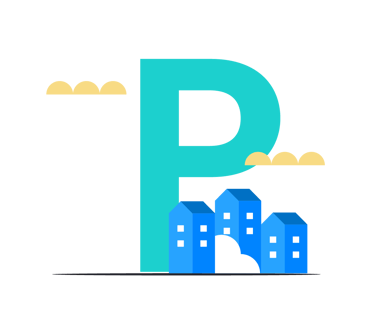
Coming up with stories from scratch can be tricky. It's usually best to use real-world scenarios, but here’s a handy model to help you create powerful stories of your own.
It’s a simple approach called the 4 Ps model: Purpose, People, Places, and Plot.
Purpose:
What lesson do you want people to take away from your story? How do you want people reading your story to feel? Strong stories have a clear moral and evoke emotion.
People:
You want your learners to empathise with the people in your story, so make your characters relatable and relevant.
Places:
Help your learners imagine the action vividly by describing the setting in detail. Use places that are relatable to your audience and relevant to the lesson you’re teaching.
Plot:
Most stories include some kind of challenge or hardship that must be overcome. What problem must your character solve? What journey will they go on to overcome this challenge?
Using Chameleon to tell stories
Here are a few examples of Chameleon interactions we like to use for storytelling.
Create a scenario using a carousel
My favorite way to tell stories in Chameleon is with a carousel. A carousel allows you to toggle through multiple media pages in a single space. Each slide has its own image and text field. I often like to use this approach right at the beginning of my modules, to capture learners' attention and get them engaged from the start.
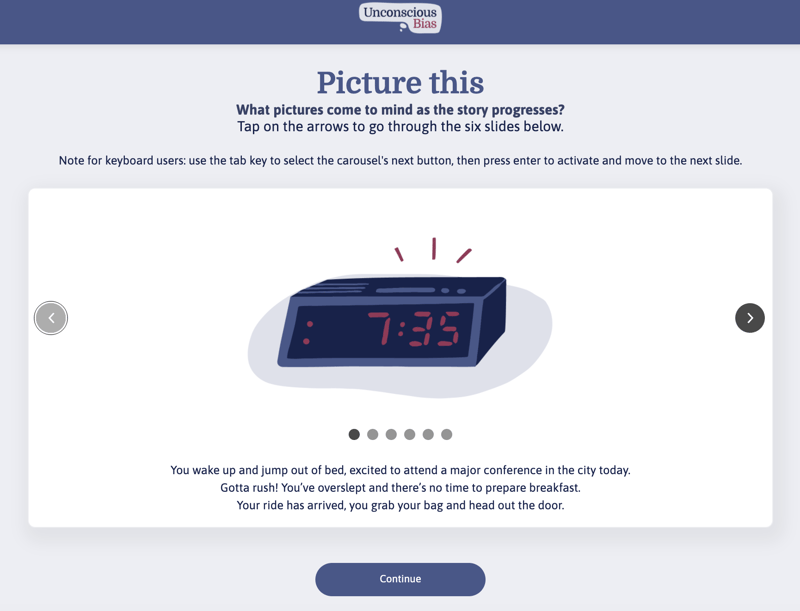
Reflect on specific parts of your story with flipcards
A story doesn't have to be limited to a single interaction. You can weave a narrative through an entire module if you want to, using a variety of interactions. I like to use flipcards to get a learner to reflect on parts of the story, and sometimes challenge their perceptions or biases, as seen below:
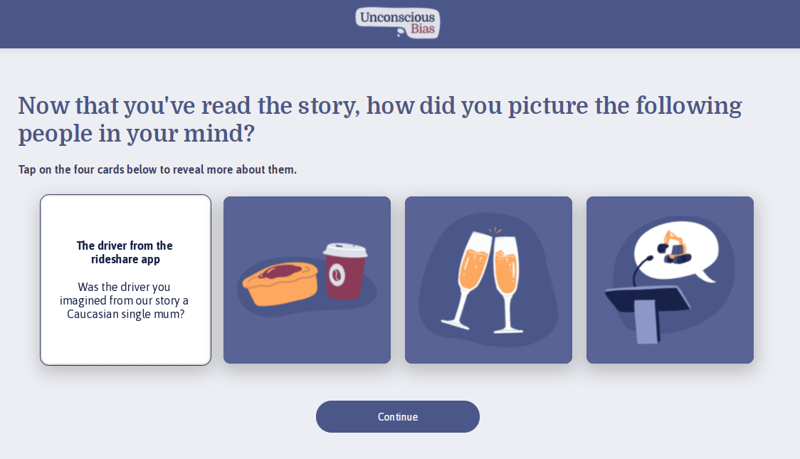
Encourage reflection with a multiple choice question
Multiple-choice questions don't have to be limited to assessments or quizzes. A multiple-choice question is a great way to encourage reflection or challenge your learner to make a decision. Sometimes, exploring the grey areas are best, as it gets your learners to really think what THEY think is the right answer. Sometimes, there is no right answer, only what the learner thinks.
If you are using multiple choice for an assessment, referencing your story helps to contextualise your questions.
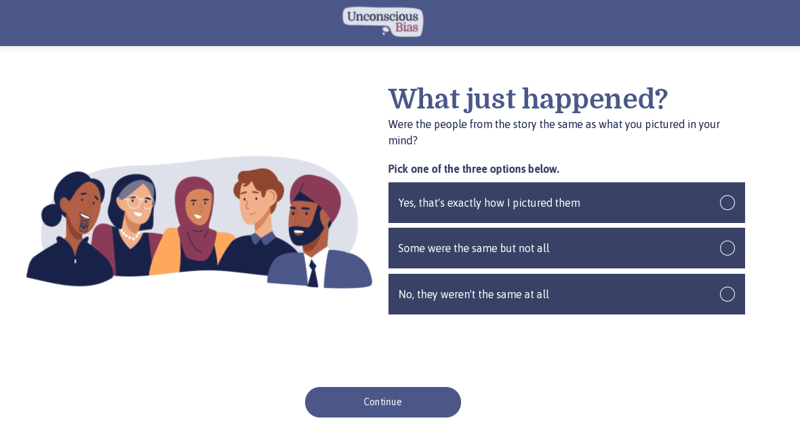
Weave a narrative throughout your learning
You can use storytelling to make a particular point, or you can weave it through the entire learning journey using a combination of interactions to keep the story/scenario front of mind for your learners.
In Courageous Conversations, we meet our hero Skinny. We go on a journey with Skinny and his team as he learns how to be a more empathetic communicator. There are references to characters and scenarios throughout the entire module.
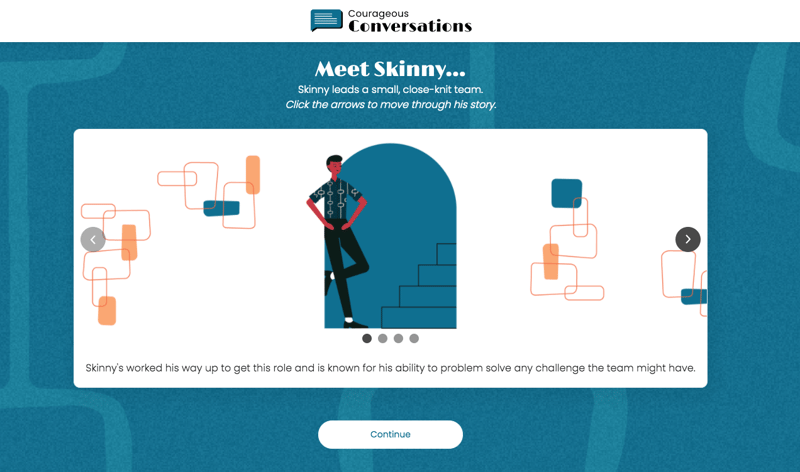
Give storytelling a go!
If you’re looking for something to elevate your online content, storytelling is your jam. Not only because stories are sticky and delicious, but also because they make the complex clear, encourage empathy and inspire action.
Stories can influence and persuade, they can motivate, and they can change the way people think, feel and behave… which is ultimately the goal of L&D isn’t it?
FREE Storytelling in Learning Design module
Download our free Chameleon Creator storytelling in learning design module.
The module takes you through all of the valuable lessons in this blog post and tests your knowledge. Share it with people in your team so they can upskill and learn all about storytelling in learning design.
View a demo of Chameleon Creator
In our 10-minute recorded demo, we'll show you how to build and publish your own module.

Written by: Josh Webster | New Zealand Chameleon Consultant
M +64 27 621 8777
Share this
You May Also Like
These Related Stories
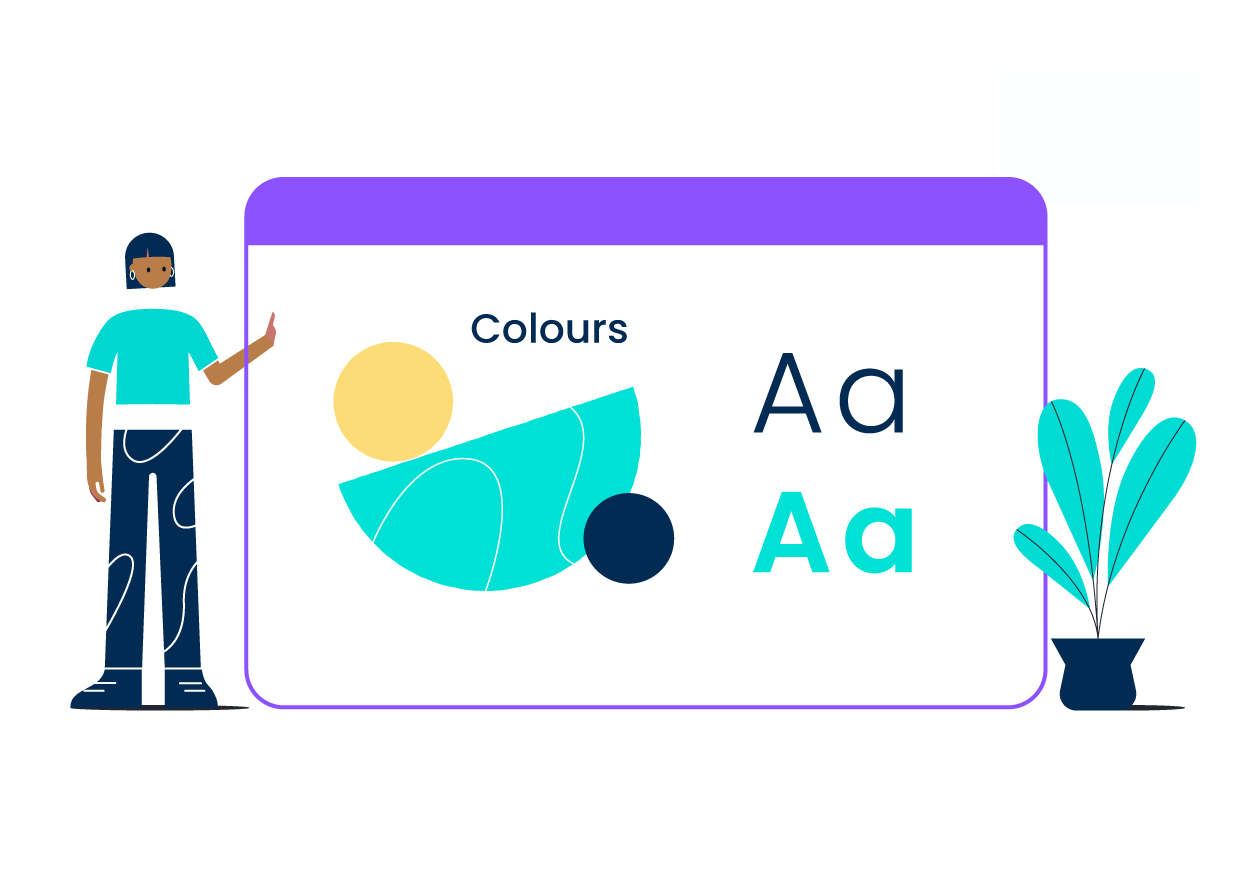
Applying Learning Experience Design principles to elearning
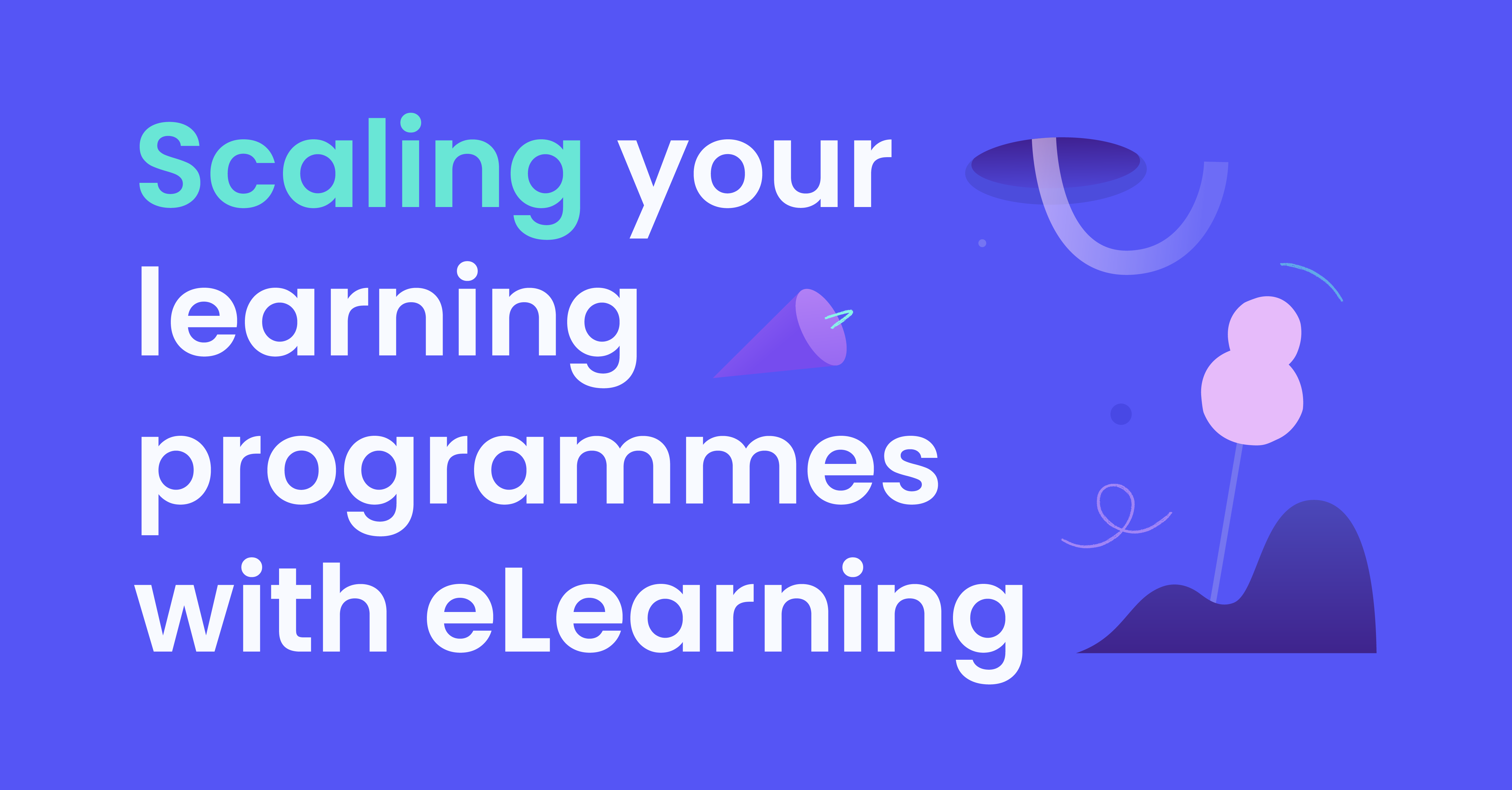
Scale your learning programmes with e-Learning.
